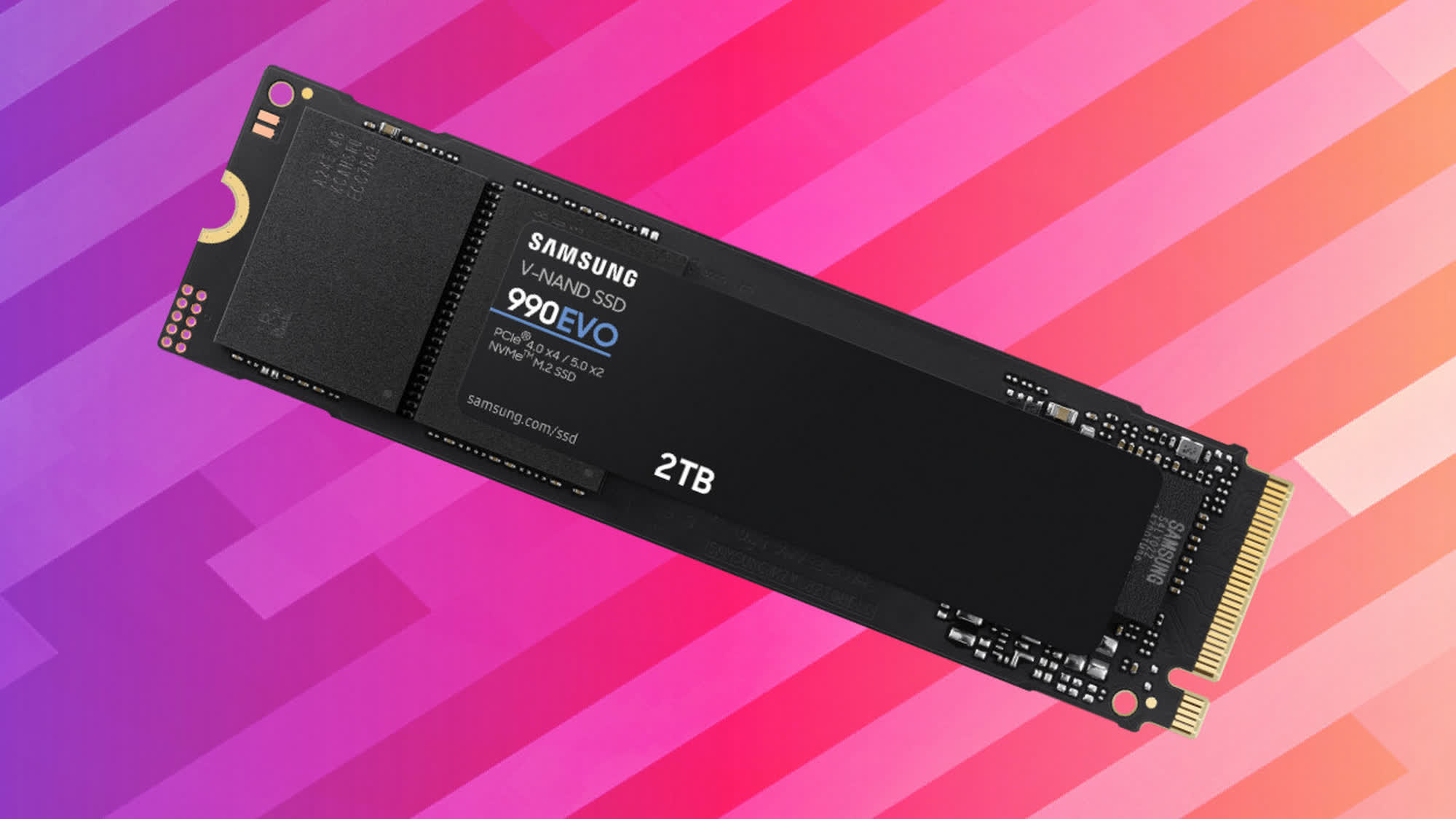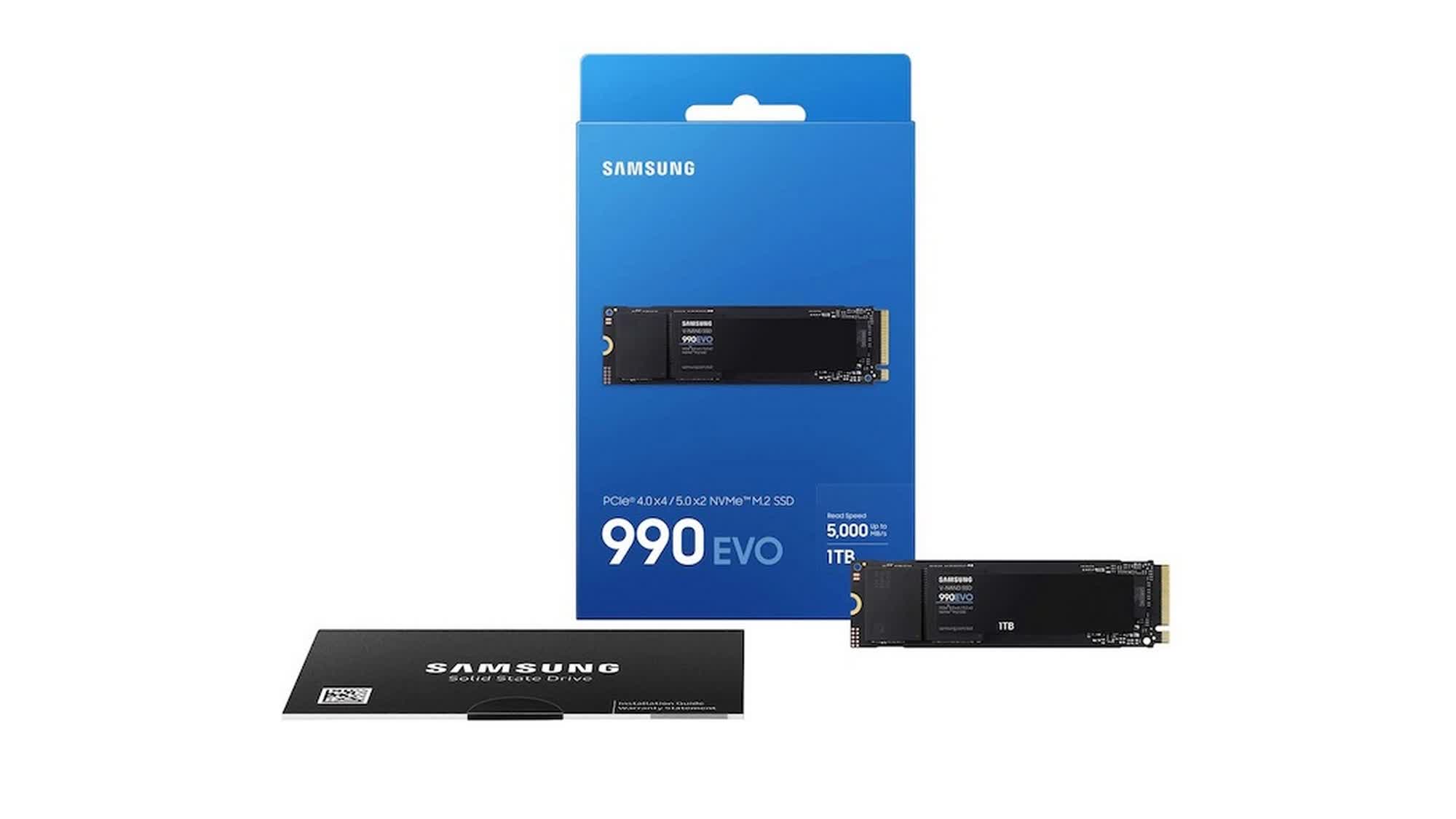What just happened? Samsung has announced the release of its latest mainstream consumer SSD, the 990 EVO. It is the company's first new mid-range consumer SSD launch in nearly five years and comes a couple of weeks after it was listed prematurely by Samsung Ukraine, revealing some of its key specs.

The 990 EVO offers up to 5,000MB/s sequential read speeds and 4,200MB/s sequential write speeds, which Samsung claims are up to 43 percent faster than its predecessor, the 970 EVO Plus. The random read speed, meanwhile, is listed at 700,000 IOPS, while the random write speed can go up to 800,000 IOPS.
While the aforementioned speeds are fairly respectable, they are not the fastest in the market. Samsung itself has faster SSDs in its portfolio, like the 990 Pro, which offers sequential read speeds of up to 7,450MB/s and sequential write speeds of up to 6,900MB/s.

Despite its modest performance potential, the 990 EVO does have one major trick up its sleeve. It supports both PCIe 4.0 x4 and PCIe 5.0 x2 connectivity, which should make it relatively future-proof. However, the availability of only two PCIe 5.0 lanes means that there won't be much of an incentive to use the PCIe 5.0 x4 slot, as it will use up valuable lanes.
Samsung is marketing the 990 EVO as a viable option for those upgrading from older SSDs, promising "significantly faster loading speeds for games and swift access to large files." The company also claims that the new SSD will be considerably more power efficient that its predecessor, using up to 70 percent less power compared to the 970 EVO Plus. The improved power efficiency should allow users to work or play on their laptops longer without having to reach for the charger.
The 990 EVO comes in 1TB and 2TB capacities, priced at $124.99 and $209.99, respectively. The 1TB model comes with a limited warranty of five years or 600TB of TBW (total bytes written), whichever comes first, while the 2TB model offers a five-year warranty or 1200TB of TBW. They are currently available for purchase globally.
https://www.techspot.com/news/101625-samsung-new-990-evo-pcie-ssd-offers-both.html